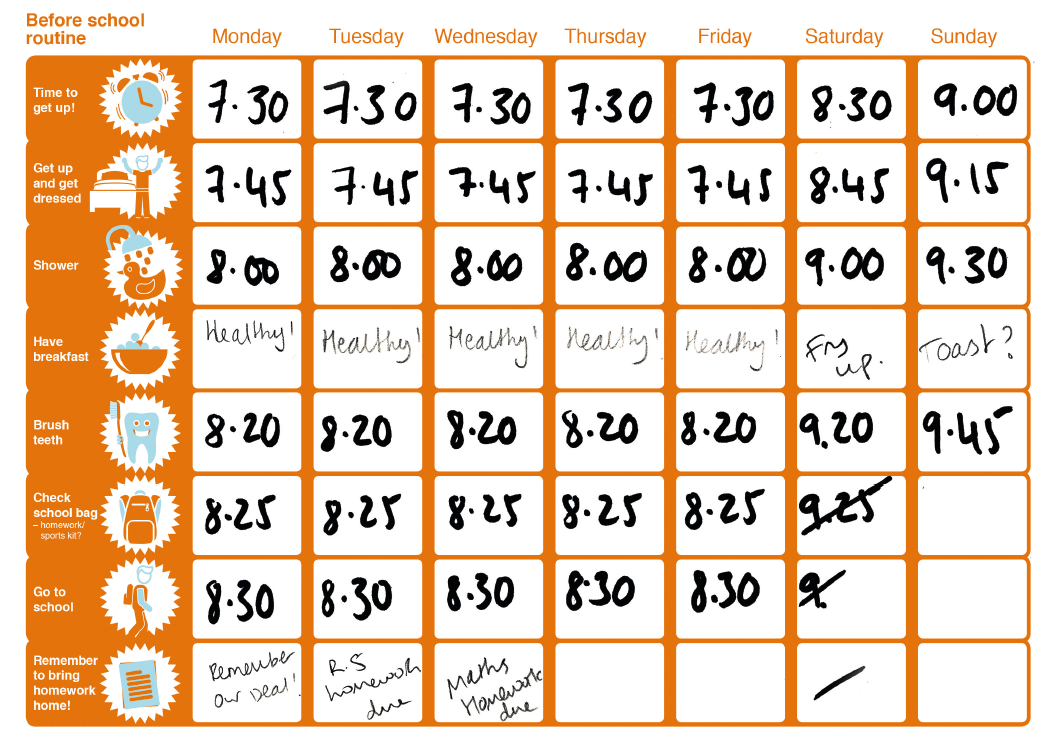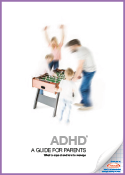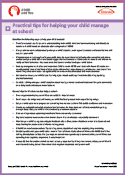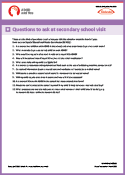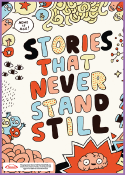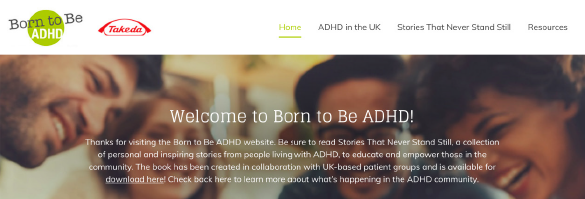ADHD can have a huge impact on family and home life. Things may have been stressful for some time, with tensions running high. Every family has its stresses, but ADHD can add to this because a child with ADHD is likely to be disorganised, messy, noisy and have occasional emotional outbursts.
Getting children and young people to go to bed at the right time and to get up on time can be a battleground for many parents. But establishing a routine can help, and if you involve your child, they will feel part of the solution, not the problem. So, work out (and write down) the routine with your child so they can have input (and buy in to it). Keep it simple to start with, because once you have the basics working, you can add more.
Children with ADHD are often very inattentive, so written and verbal instructions are helpful. Pictures, particularly for younger children, are worth a thousand words, so think about using pictures, photographs or drawings from magazines to show what you want done and what is expected – a ‘visual calendar’.
You can stick them on a chart in the form of a checklist in the order that they need to be completed. Put the checklist where your child can see it easily and maybe even tick the activity as it’s finished.
It’s also a good idea to give children time to process changes: for example, give countdown reminders (say, from 10 minutes down to take-off) before your child needs to leave the house, go to bed, stop playing on the computer/iPad/phone, etc.
We all like visible signs of our progress and improvements. So why not draw up a chart with your child showing what you expect in the new routine, how long you expect it to take and how your child has done over a week or a month? Maybe even set up a spreadsheet on the home computer or keep notes on your smartphone. Make sure that your child is involved and buys into the new routine.
In the
Resources section of this website you will find a sample visual calendar template to help you.
Praise your child’s strengths and reward them to encourage further good behaviour and increase their sense of self-worth. You will need to criticise from time to time but try to distinguish the behaviour from the child. Rather than saying “I’ve told you a million times not to leave your shoes there - are you deaf or stupid?” focus on the behaviour and its consequences: “It was annoying to trip over your shoes again and I spilled my coffee and could have broken the mug. Now I have to clear it up and we are going to be late leaving for the cinema.”
Always try to look for things to praise and offer appropriate rewards after sustained positive behaviours. Negative consequences or criticism should be used far less than positive consequences with children with ADHD – it just makes them feel bad about themselves and encourages further bad behaviour. Praise the good things and try to ignore the bad unless it is dangerous to do so – and if you’re going to have a battle, pick your moment!
In the
Resources section of this website you will find a template to help you establish new routines with your child.
Contracting is about talking to your child about the right way to behave, and agreeing a plan together, with rewards for them when they do what they are asked. The contract – ‘The Deal’ – can be written down and it is essential for the child to agree the behaviour change – if they think it is their idea they are far more likely to stick to it. The contract should be specific, appropriate and sustainable over the long term. Agree the reward you are going to give to your child in advance and make sure it is appropriate to the change you want and that your child is motivated by the reward. Ideas for contracts or ‘deals’ could include getting up on time five mornings in a row, tidying their room every day, doing their homework for ten minutes every night and so on.
Remember to keep your contracts or deals clear, brief, and if possible visual/written down, so your child knows what is expected and there is no misunderstanding.
It’s best not to try too many contracts at any one time, and the contracts must not have a negative consequence. It is very important for children with ADHD that you look for the positives and acknowledge the good things they do.
Children with ADHD are prone to public emotional outbursts when they get upset or don’t get their own way. How you react can calm them down – or trigger a ‘meltdown’.
Managing a child with ADHD is often like seeing just the tip of an iceberg – they are behaving in a certain way for a reason, but the reason is beneath the surface. Listening to them, without talking but acknowledging their anger, can sometimes calm them down and avoid making the situation worse. It’s also a good way of finding what’s under the surface.
Quite often children with ADHD who have coped all day at school will be exhausted, and their underlying anger and emotion spills over when they come home. This is why it’s important for you to listen. Children’s emotions are driven by the need to feel protected and feel free from pain. Some children display challenging behaviour because of an emotional need but they may find it difficult to express their emotions appropriately. Others use challenging behaviours to communicate something. Some children cannot always find the words they need to communicate their wishes, which leads to them ‘acting up’ as a way of getting through to you.
Sleep is a major issue and something many parents of children with ADHD mention. The relationship between sleep and ADHD is complex and can be a vicious circle: ADHD can lead to sleep problems and a lack of sleep can make the symptoms of ADHD worse. Also, certain medications for ADHD can lead to further sleep difficulties.
These facts highlight the importance of sleep for children with ADHD:
-
Increasing your child’s sleep by as little as half an hour can dramatically improve school performance
-
Addressing sleep problems might improve your child’s ADHD symptoms
-
Better sleep can improve a child’s concentration and ability to learn
Solutions to sleep problems must be explained gently so that it does not sound like a long list of do’s and don’ts that children may find overwhelming. Instead, suggest a few ideas to help but say that everything may not work at once. It’s all part of learning what works best for you and your child.
Sibling relationships can become strained if one of them has ADHD. Siblings may feel frustrated with trying to understand their brother or sister. Some may resent what they feel is a greater burden of work or responsibility. They may also feel that their brother or sister is getting more of your attention. Finally, since ADHD is often hereditary, they may have ADHD as well.


